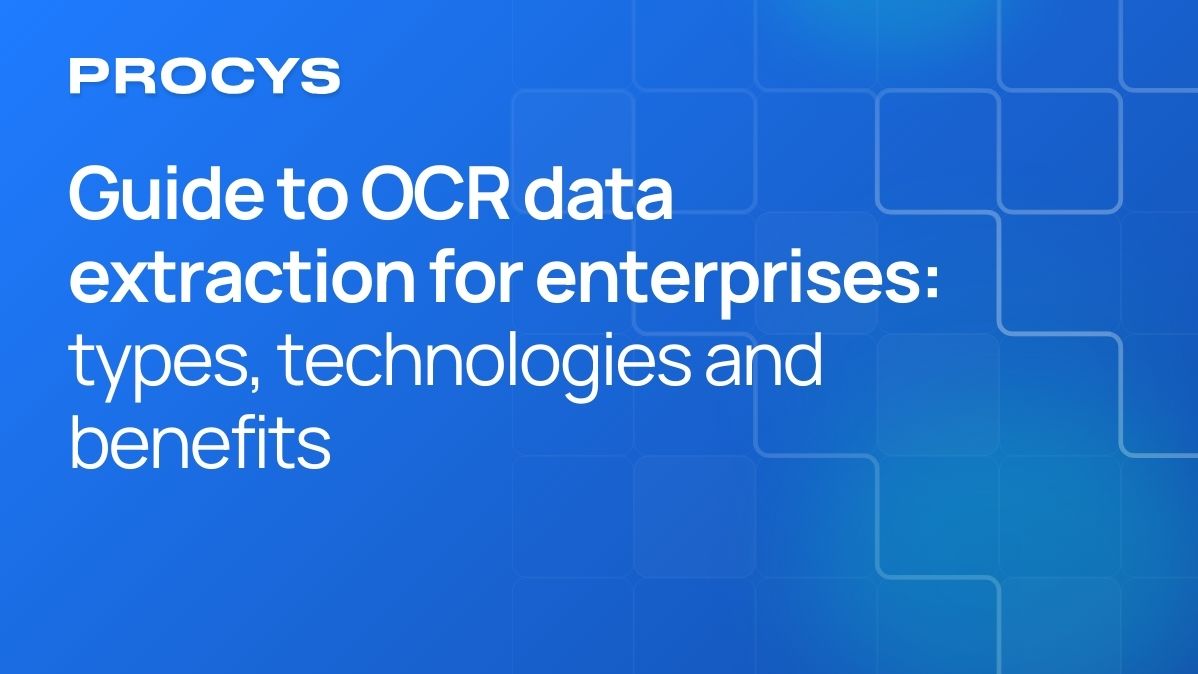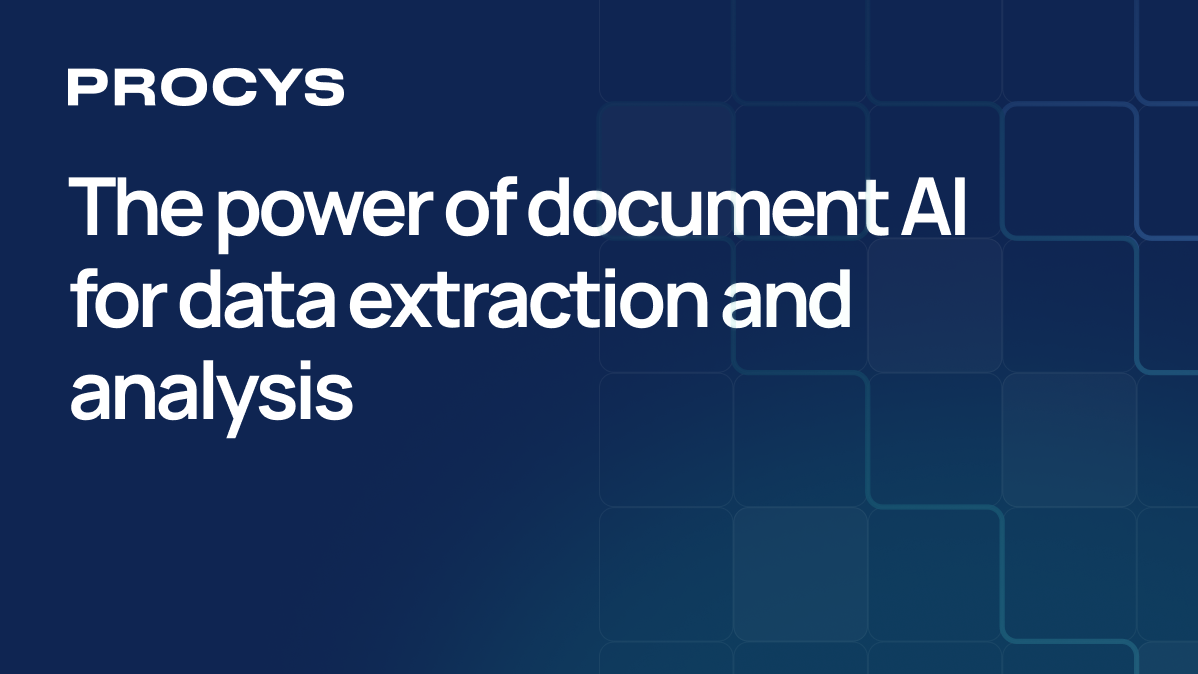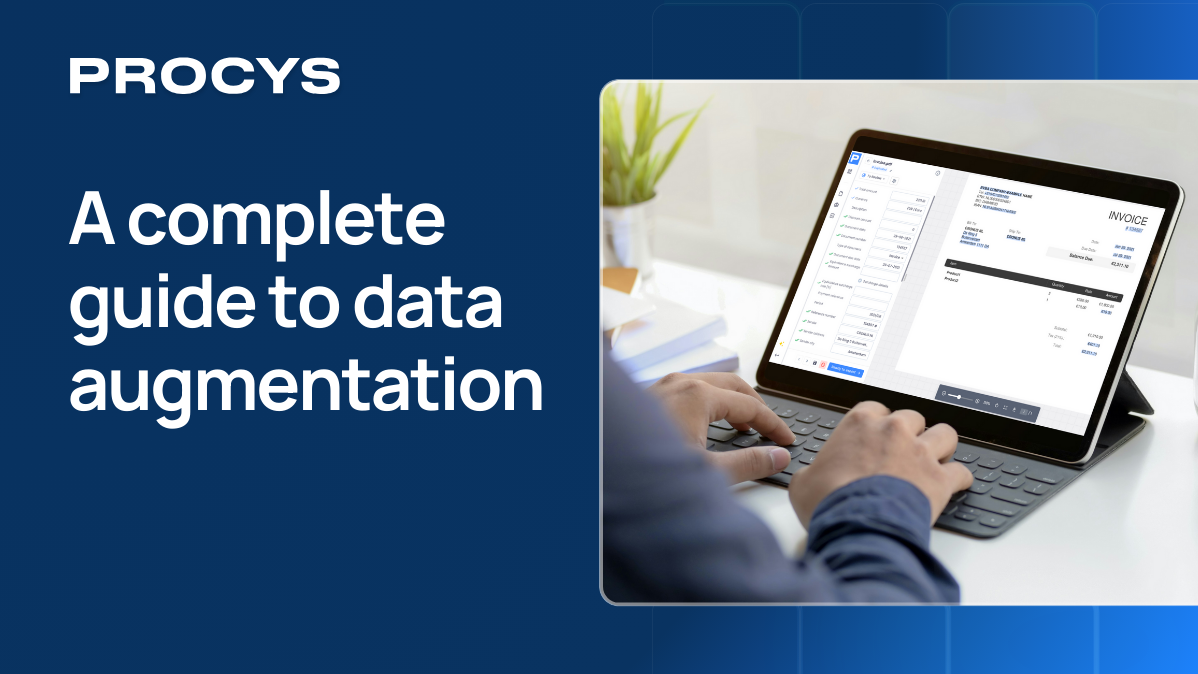Despite widespread digitization over the past 10 years, too many businesses still trip over their own documents.
Buried within invoices, receipts, contracts, purchase orders, and forms lie crucial data that enterprise decision-makers in finance, operations, and IT need to drive efficiency, maintain compliance, and support accurate reporting.
Nonetheless, for many organizations, extracting this data remains a manual, time-consuming task.
Optical character recognition (OCR) data extraction for enterprises automates the process, enabling organizations to convert unstructured documents into structured, actionable information. By combining OCR, intelligent character recognition (ICR), and advanced AI technologies like machine learning (ML), businesses can streamline workflows, reduce errors, and make data-driven decisions faster.
In this guide, we’ll explore OCR data extraction for enterprises: what it is, the types and technologies involved, the benefits for businesses, key considerations for adoption, and how Procys empowers enterprises to unlock the full potential of their documents.
What is OCR data extraction?
IBM defines optical character recognition as “a technology that uses automated data extraction to quickly convert images of text into a machine-readable format.”
For enterprises, OCR data extraction goes beyond simple text recognition - it’s about automating the identification, capture, and classification of critical information from high volumes of documents.
ICR, an extension of OCR, uses AI models to interpret handwritten or cursive text, while natural language processing (NLP) provides context so that AI does more than read words - it understands them. For example, it can identify an “invoice total” even when labeled as “amount due” or “balance” in different formats.
Custom OCR data extraction for enterprises ensures that instead of manually sifting through hundreds of invoices or contracts, your systems automatically capture the right data and feed it directly into accounting, ERP, or operational workflows.
Types of OCR data extraction for enterprises
Enterprises handle diverse document types, and OCR solutions can be categorized based on the type of data they extract:
Structured document extraction
- Works with consistently formatted documents such as standardized invoices, purchase orders, and forms.
- Data fields (e.g., invoice number, date, amount) are located in predictable, fixed positions, making extraction straightforward and rule-based.
Semi-structured document extraction
- Handles documents that follow a general format but vary in layout or language, such as receipts or vendor statements.
- AI models learn patterns and relationships across different document versions to reliably locate and extract key fields.
Unstructured document extraction
- Designed for documents with high variability in structure like contracts, emails, or legal filings.
- Uses natural language processing (NLP) and machine learning (ML) to understand context, semantics, and relationships to extract meaningful information beyond plain text.
Hybrid extraction
- Combines structured, semi-structured, and unstructured extraction techniques.
- Ideal for large enterprises that handle diverse document types across different departments and workflows.
- Ensures flexibility, scalability, and higher accuracy in complex data extraction ecosystems.
By choosing the right type of OCR data extraction for enterprises, organizations can tailor automation to meet their operational and compliance needs. To do so, it’s important to understand the technologies behind these data extraction tools.
Technologies underpinning OCR extraction
Modern enterprise OCR data extraction uses multiple AI-driven technologies - these include:
- Optical character recognition (OCR): converts printed or typed text into machine-readable data.
- Intelligent character recognition (ICR): interprets handwritten or cursive text, continuously improving accuracy with more data.
- Machine learning (ML): trains models on thousands of document samples to identify key fields automatically.
- Natural language processing (NLP): understands context, extracting meaning rather than just text.
- Computer vision (CV): recognizes document structure, tables, and formatting.
- Deep learning: continuously improves extraction accuracy by learning from previous data patterns.
Together, these technologies allow enterprises to process documents at scale, with the speed, accuracy, and consistency necessary for complex operations.
Real benefits for enterprises
AI-driven OCR data extraction for enterprises delivers tangible benefits in industries like accounting, travel and hospitality, and logistics:
- Time savings: automated data capture replaces hours of manual entry.
- Cost reduction: minimizes labor costs and reduces errors that lead to rework.
- Enhanced accuracy: AI-driven extraction achieves high accuracy even with variable document layouts.
- Compliance and audit readiness: maintains searchable, centralized, and validated records.
- Scalability: processes thousands of documents quickly without adding headcount.
- Data-driven insights: analyzes extracted data to identify trends, anomalies, and opportunities.
An October 2024 Applied AI webinar, Unlocking the Power of Document Extraction with AI, revealed how AI solutions can reduce the cost per document by up to 80% and that AI-powered data extraction can reach 95-99% accuracy, drastically reducing errors in data extraction processes.
For enterprises, these benefits translate into faster approvals, improved financial reporting, and operational agility, enabling leaders to act with confidence on reliable data.
Key considerations when choosing an OCR extraction solution for enterprises
Before adopting an OCR data extraction solution, enterprise decision-makers should evaluate:
- Accuracy and reliability: can the system handle variable document layouts and maintain high precision?
- Integration capability: does it seamlessly connect with ERP, accounting, and document management systems?
- Scalability: can the solution handle growing document volumes without manual intervention?
- Security and compliance: are documents processed securely with audit trails for regulatory requirements?
- Adaptability: does the AI learn and improve over time, adapting to new document formats?
Selecting a platform that aligns with enterprise workflows ensures maximum ROI and avoids disruptions to daily operations.
How Procys helps enterprise OCR data extraction
Procys brings enterprise OCR data extraction to life with an AI-driven solution built for scale, accuracy, and ease of use:
- Automated data extraction: Procys reads invoices, purchase orders, receipts, and contracts with outstanding accuracy.
- Built-in validation: detects duplicates, inconsistencies, or errors before they impact operations.
- Integration-ready APIs: seamlessly connects with ERP, accounting, and document management systems.
- Secure, audit-ready records: ensures compliance and transparency across all document workflows.
- Intelligent learning: models continuously improve as Procys processes more documents, enhancing accuracy and reducing manual oversight.
By using Procys, enterprise teams can replace slow, error-prone manual processes with automated, intelligent workflows - freeing resources for higher-value initiatives while maintaining control over data integrity.
Conclusion
Today, OCR data extraction is a strategic necessity for enterprises.
Organizations that embrace AI-driven document automation gain speed, accuracy, and real-time insights across their operations.
With Procys, enterprises can:
- Automate data extraction and validation.
- Achieve consistently high accuracy across diverse document types.
- Integrate seamlessly with existing systems.
- Maintain audit-ready, compliant records.
- Scale document workflows without additional headcount.
Procys turns document chaos into clarity, enabling enterprise teams to save time, reduce costs, and make smarter, data-driven decisions.
Try out the Procys platform for free today - no credit card required - and see how AI can revolutionize your enterprise document workflows.





